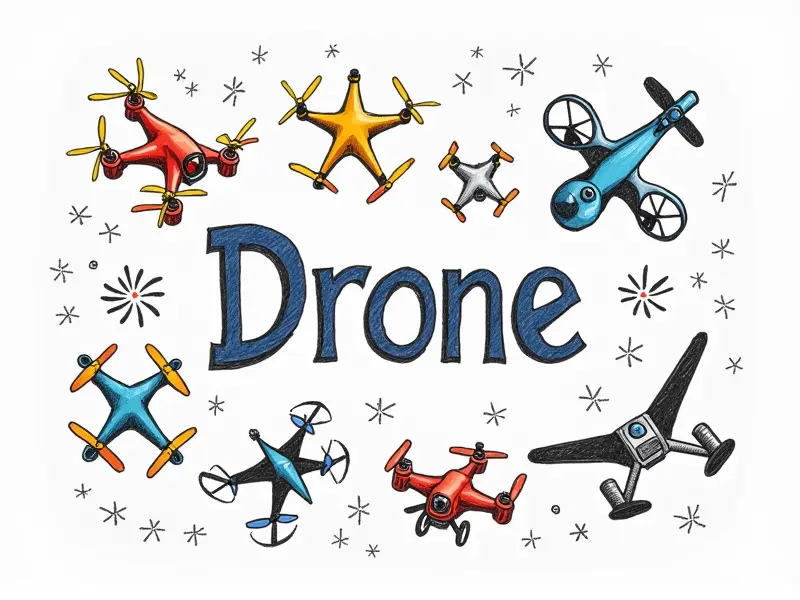Which motor type is better?

Why Brushless Motors Outperform in Drones
Brushless motors, also known as BLDC (Brushless DC) or PMSM (Permanent Magnet Synchronous Motor), have become the go-to choice for drone enthusiasts and professionals alike due to their superior performance characteristics. These motors offer higher efficiency, better power-to-weight ratio, and reduced maintenance compared to traditional brushed motors.
The key advantage of brushless motors lies in their design which eliminates brushes, resulting in less friction and heat generation. This leads to improved reliability and longer lifespan. Additionally, the lack of mechanical wear means that brushless motors can operate at higher speeds with lower noise levels, making them ideal for applications where performance is critical.
Brushed vs Brushless Motors: Performance Comparison
A thorough comparison between brushed and brushless motors reveals significant differences in terms of efficiency, speed, torque, and durability. While brushed motors are simpler and cheaper to manufacture, they suffer from inherent limitations such as increased friction, heat generation, and mechanical wear.
- Efficiency: Brushless motors typically achieve efficiencies between 80-90%, whereas brushed motors range around 75-80% due to higher internal resistance.
- Speed: BLDC motors can spin up to twice as fast as their brushed counterparts, making them well-suited for high-performance applications like racing drones.
- Torque: Brushless motors deliver consistent torque across a wide range of RPMs, while brushed motors experience diminishing returns at higher speeds.
- Durability: The absence of brushes in BLDC motors significantly reduces wear and tear, leading to much longer operational lifetimes without the need for maintenance or replacement.
Motor Types Explained: Brushed, Brushless
To understand why brushless motors are preferred over brushed ones, it's essential to first grasp their fundamental differences:
Brushed Motors
Brushed motors rely on mechanical brushes that make contact with a commutator inside the motor housing. This direct electrical connection creates friction and generates heat during operation.
- Simplicity: Easy to manufacture and maintain.
- Cost-effectiveness: Cheaper than brushless motors.
Brushless Motors (BLDC & PMSM)
In contrast, brushless motors use electronic commutation controlled by an external controller or integrated circuit. This eliminates the need for brushes and significantly reduces wear and tear.
- Efficiency: Higher efficiency due to reduced internal resistance.
- Durability: Longer lifespan due to lack of mechanical wear.
Choosing Between BLDC & PMSM Motors
While both BLDC and PMSM motors are brushless, they differ in their construction and performance characteristics. Understanding these distinctions can help you make an informed decision based on your specific needs:
BLDC (Brushless DC) Motors
- Simplicity: Easier to control with simple electronics.
- Cost-effectiveness: Slightly less expensive than PMSM motors.
- Performance: Adequate for most RC applications, including drones and racing.
PMSM (Permanent Magnet Synchronous) Motors
- Efficiency: More efficient due to optimized magnetic flux distribution.
- Torque Density: Higher torque density for better power delivery.
- Suitability: Ideal for high-performance applications requiring precise control and maximum efficiency.
Coreless vs Brushless Motors: Pros & Cons
Another factor to consider when selecting a motor type is whether you should opt for coreless or brushless motors. Coreless motors, also known as inrunner motors, are commonly used in high-performance racing applications:
Coreless (Inrunner) Motors
- Lightweight: Extremely lightweight and compact design.
- Simplicity: Simple construction with fewer moving parts.
- No Brushes: Like brushless motors, they don't have brushes which reduces wear.
Brushless Motors
- Better Efficiency: Higher efficiency due to advanced electronic control systems.
- Durability: Longer lifespan and lower maintenance requirements.
- Torque Density: Superior torque density for better performance in heavy lifting or high-speed applications.
Comparing BLDC to Brushed Motors Efficiency
The efficiency comparison between BLDC and brushed motors is a critical factor when choosing the right motor type. Here’s how they stack up:
- BLDC Motors: Achieve efficiencies of 80-90%, minimizing energy loss and maximizing power output.
- Brushed Motors: Have lower efficiency due to higher internal resistance, typically around 75-80%.
Picking the Right Motor for Your Quadcopter
Selecting the appropriate motor type for your quadcopter involves considering several factors such as flight duration, performance requirements, and budget constraints:
- Flight Duration: For longer flights, BLDC motors offer better efficiency and longer operational life.
- Performance Requirements: High-performance racing drones benefit from the superior torque density of PMSM or coreless (inrunner) motors.
- Budget Constraints: While brushless motors are generally more expensive, their long-term cost savings and performance benefits often justify the initial investment.
FPV Racing: BLDC or Inrunner Motors?
In the world of FPV (First-Person View) racing drones, the choice between BLDC and inrunner motors is crucial:
- BLDC Motors: Provide balanced performance with good efficiency and durability.
- Inrunner Motors: Offer superior lightweight design and high-speed capabilities essential for competitive racing.
Best RC Drone Motor Type Explained
The best motor type for your RC drone depends on your specific requirements, whether it's flight duration, performance, or cost-effectiveness. Here’s a quick guide:
- For Long Flights: Opt for BLDC motors due to their higher efficiency and durability.
- For High-Performance Racing: Choose inrunner (coreless) motors or high-torque PMSM motors for unbeatable speed and agility.
- Budget-Friendly Options: Consider entry-level BLDC motors that offer a good balance of performance and affordability.
Conclusion
The choice between coreless, brushless, or brushed motors ultimately depends on your specific needs for efficiency, durability, and performance. Understanding the pros and cons of each type can help you make an informed decision that best suits your RC drone requirements.
This comprehensive guide should provide a solid foundation for making an educated selection when choosing the right motor type for your RC drone or quadcopter project.

